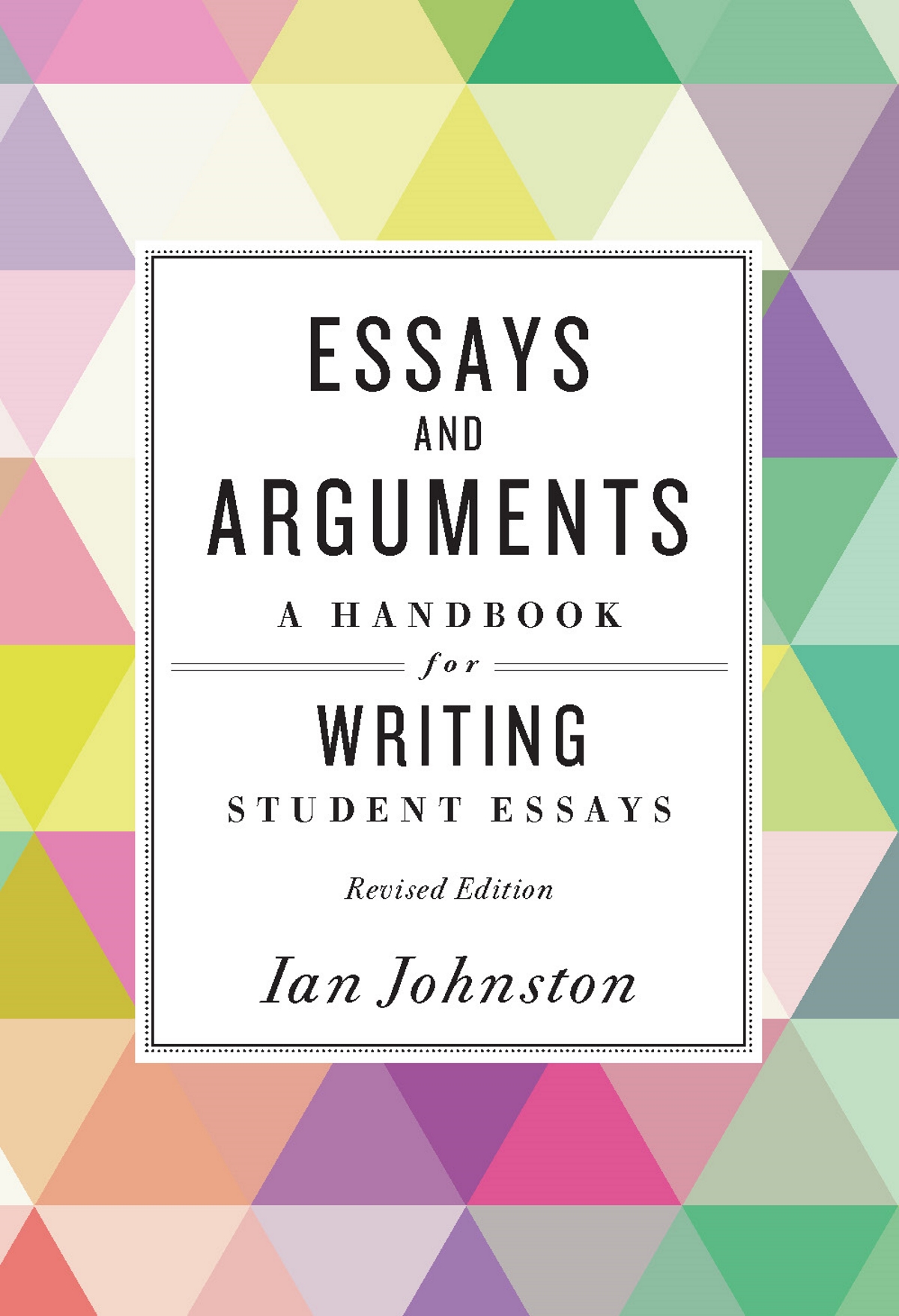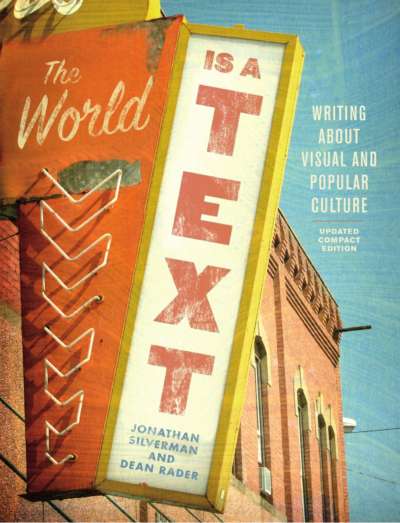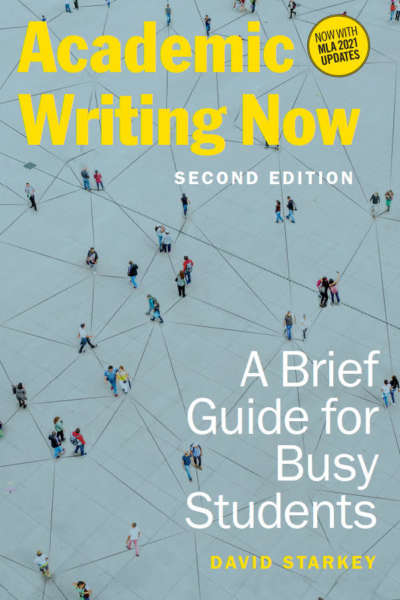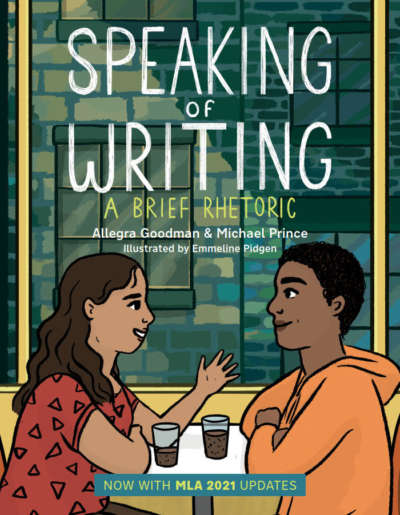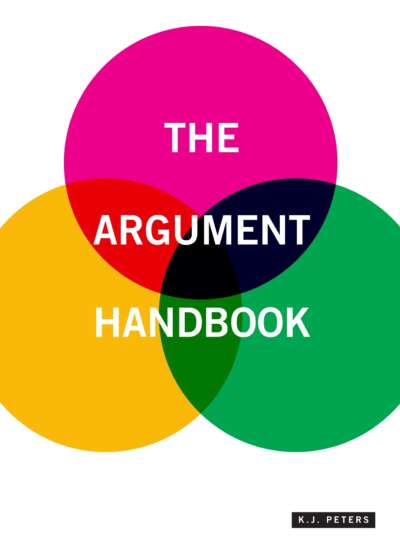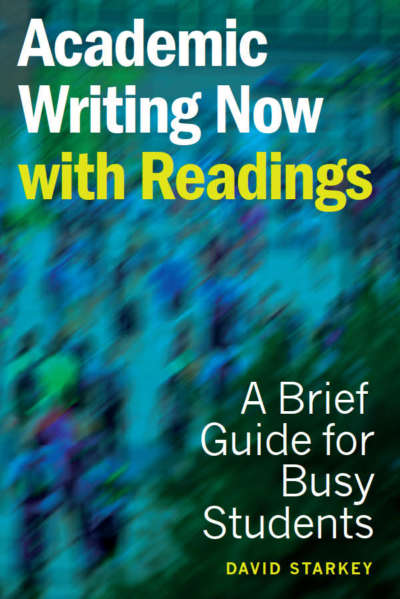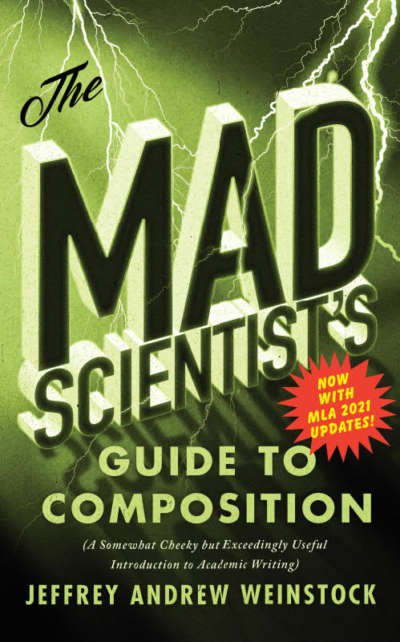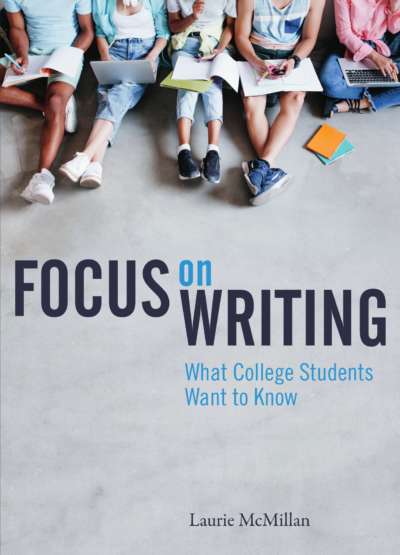How does one help undergraduate students learn quickly how to produce effectively organized, persuasive, well-reasoned essays? This book offers a straightforward, systematic introduction to some of the key elements of the construction of arguments in essay form. The focus here is on practical advice that will prove immediately useful to students—recommended procedures are emphasized, and detailed examples of academic and student writing are provided throughout.
The book introduces the basics of argumentation before moving on to the structure and organization of essays. Planning and outlining the essay, writing strong thesis statements, organizing coherent paragraphs, and writing effective introductions and conclusions are among the subjects discussed. A separate section concisely explores issues specific to essays about literary works.
Comments
“In its focus on argument as the reason to write college essays in the first place, Essays And Arguments is a valuable resource for undergraduates. Ian Johnston shows how sentences and paragraphs become ideas, and in doing so equips students not just to construct their own arguments, but also to identify what is and is not an argument in the writing of others. Essays and Arguments is that rare composition text that will help students become better readers, as well as better writers.” — Jonathan Beecher Field, Clemson University
“Teaching argumentation and essay-writing is extraordinarily difficult, and learning to argue and write is even harder, but Ian Johnston’s Essays and Arguments provides an excellent resource for both writing instructors and students. Johnston’s handbook is the product of years of in-class experience and offers a wealth of information about logic and argument, structure and evidence, and rhetoric and revision—all delivered with clarity and accessibility. The handbook includes substantial sections on writing about literature, but it discusses a range of essay genres (including review essays and historical essays) such that other disciplines will benefit from the book too. Johnston’s examples are clear, wide-ranging, vivid, and enormously helpful. Essays and Arguments is a worthwhile addition to any writing instructor’s library and a useful tool for any student.” — Lindsey Michael Banco, University of Saskatchewan
“Ian Johnston’s book is not trendy. It covers essential, enduring troubles of argumentation, especially matters of organization and structure. Johnston combines a lucid introduction to everyday logic with practical advice on composing arguments. The bulk of the text—examples of patterns typically found in novice academic papers and the revised versions of those examples—are familiar but not tired. In other words, the examples feel helpfully accessible. The book deserves serious consideration for standard university writing courses.” — Glenn Simshaw, Scripps College
“For years I’ve been recommending the old, online edition of this text to my undergraduate students; it’s great to see a new edition of Essays and Arguments. I’ve been teaching composition in one context or another since 1987, and this is the only book I’ve ever used with students that has had an immediate and significant effect in improving their writing.” — Maureen Okun, Vancouver Island University
Author’s Note
1.0 Introduction
- The Purpose of This Text
- A Word to the Student Reader:
Why Essay Writing Matters
2.0 Some Basic First Principles
- Initial Comments on Arguments
- Trivial Arguments
- More Complex Arguments
- The Importance of Reason
- An Overview of the Major Tools
- Definition
- Deduction
- Induction
- Deduction and Induction in Combination
- Recognizing the Form of Simple Arguments
- Exercises in Deduction and Induction
- Further Observations on Deduction and Induction
- The Strength or Persuasiveness of an Argument
- Agreed-Upon Principles and Facts
- Applying General Principles to Particular Claims
- Falsification Theories of Science
- The Problem of Hidden or Misleading Assumptions
- Negative Proofs: Eliminating the Alternatives
- Overstating the Conclusion
- Exercise in Simple Inductive Arguments
- Some Potential Problems in Arguments
- Exercise in Evaluating Short Arguments
3.0 Organizing a Written Argument
- Understanding the Assignment
- The Importance of Structure: Paragraphs
- A Note on the Tone of the Argument
4.0 Setting Up the Argument
- Defining the Argument
- Two Simple Examples
- General Features of an Introductory Paragraph
- The Importance of Identifying a Focus
- The Importance of Establishing a Thesis
- Forming Good Thesis Statements
- Exercise: Recognizing Potentially Useful Thesis Statements
- Thesis Statements with a Scientific or Historical Focus
- The Start of an Outline for the Argument
- Writing Introductory Paragraphs
- Exercises in Opening Paragraphs
5.0 Explaining Key Terms
- Organizing Definitions
- Sample Definition Paragraphs
- Disputed Definitions
- Self-Serving Definitions
- Descriptive and Narrative Background
- Extended Definitions
- Summary Points on Establishing the Argument
6.0 Organizing the Main Body of an Argument
- General Remarks
- Selecting the Topics for the Main Body
- Rethinking the Focus and Thesis of the Argument
- Developing an Outline: Argumentative Topic Sentences
- A Common Error in Argumentative Topic Sentences
- Exercise in Argumentative Topic Sentences
- Drawing Up a Simple Outline (For a Short Essay)
- Checking the Outline
- Some Sample Formats for Topic Sentences
- Topic Sentences to Avoid
- More Complex Structures
- Depth versus Breadth
- Interrupting the Argument
- Organizing Paragraph Clusters
- Inserting a Detailed Illustration or Example into the Argument
- Acknowledging Alternative Arguments
- Introducing Analogies
- Paragraphs of Narration, Description, and Definition
- Setting Up a Narrative or Descriptive “Hook”
- Guiding the Reader through a Paragraph Cluster
- An Example
7.0 Paragraph Structure
- Argumentative Paragraphs in the Main Body of the Essay
- Paragraphs Arguing from General Principles
- Paragraphs Providing and Interpreting Evidence
- Interpreting Evidence
- Paragraph Unity
- Paragraph Coherence
- Achieving Paragraph Coherence
- Transition Words as Logical Indicators
- A Short Catalogue of Transition Words
- Concluding Paragraphs
- Conclusions
- Sample Conclusions
- More Substantial Conclusions
- Recommendations
- Structuring a Comparative Essay
- Writing Reviews of Fine and Performing Arts Events
- Sample Short Review of a Dramatic Production
8.0 Essays about Literature
- Preliminary Considerations
- Imposing Snap Judgements
- Summarizing and Interpreting
- Interpreting and Explaining Away
- Interpreting from the Outside and from the Inside
- Clarifying the Assignment
- Appealing to Context
- Appealing to Sources
- Appealing to Authorial Intentions
- Appealing to Literary Conventions
- Arguing about What Is Missing in a Text
- Using a Conceptual Framework as the Basis for an Interpretation
- Writing Essays about Arguments
- Dealing with Arguments on Their Own Terms
- Focus on Something Specific in the Argument
- Using Examples and Counterexamples
- Sample Outlines
- Evaluating the Style in Assessing Arguments
- Writing Essays about Fiction
- Selecting a Focus
- Avoiding a Structure that Is a List of Examples
- Dealing with Themes in Fictions
- Writing Essays on Lyric Poetry
- What Is a Lyric Poem?
- Interpreting a Lyric Poem
- Structuring a Short Interpretative Essay on a Lyric Poem
- Interpreting the Evidence in a Lyric Poem
- Interpreting Symbolic Meanings in a Lyric Poem
- Dealing with Ideas in Lyric Poems
9.0 Answers to Exercises
2.6 Recognizing the Form of Simple Arguments
2.7 Exercises in Deduction and Induction
2.8.8 Exercise in Simple Inductive Arguments
2.10 Exercise in Evaluating Short Arguments
4.3.2 Exercise: Recognizing Potentially
Useful Thesis Statements
4.5.1 Exercises in Opening Paragraphs
6.4.2 Exercise in Argumentative Topic Sentences
Index
Ian Johnston is Emeritus Professor at Vancouver Island University, Nanaimo, British Columbia.
For a sample from chapter 2 of Essays and Arguments, click here. (Opens as a PDF.)
— Jargon-free, practical, and systematic
— Accessible and readable but not oversimplified—takes students seriously as readers and writers
— Exercises throughout reinforce key concepts such as inductive and deductive arguments, thesis statements, and topic sentences
— Illustrative examples drawn from across the humanities, including English, philosophy, law, and social sciences
Online Materials for Instructors
This text has a companion website for instructors. It includes PowerPoint lectures, quizzes, and a sample syllabus.
To request an access code, please email examcopies@broadviewpress.com.

